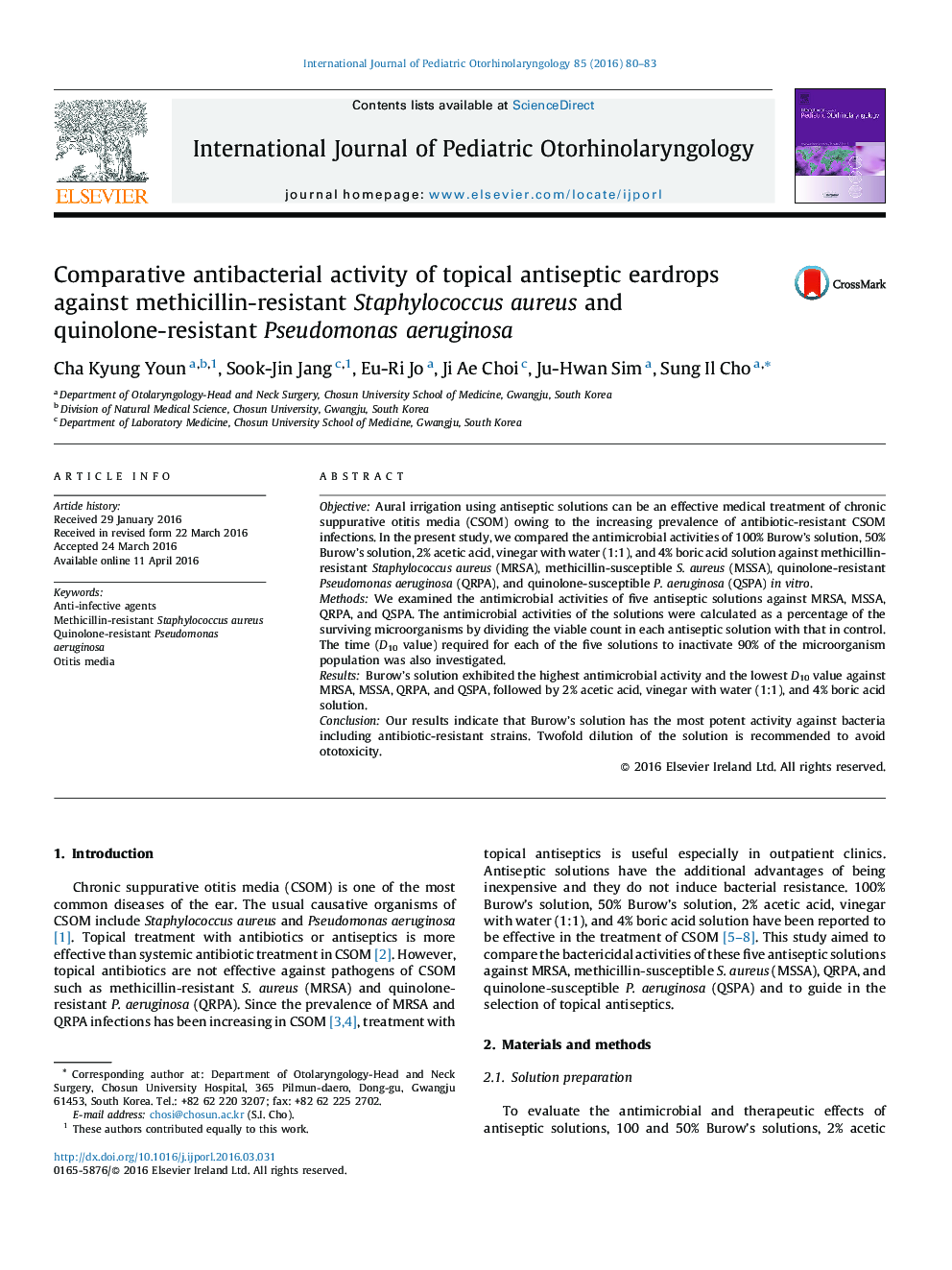| Article ID | Journal | Published Year | Pages | File Type |
|---|---|---|---|---|
| 6213131 | International Journal of Pediatric Otorhinolaryngology | 2016 | 4 Pages |
ObjectiveAural irrigation using antiseptic solutions can be an effective medical treatment of chronic suppurative otitis media (CSOM) owing to the increasing prevalence of antibiotic-resistant CSOM infections. In the present study, we compared the antimicrobial activities of 100% Burow's solution, 50% Burow's solution, 2% acetic acid, vinegar with water (1:1), and 4% boric acid solution against methicillin-resistant Staphylococcus aureus (MRSA), methicillin-susceptible S. aureus (MSSA), quinolone-resistant Pseudomonas aeruginosa (QRPA), and quinolone-susceptible P. aeruginosa (QSPA) in vitro.MethodsWe examined the antimicrobial activities of five antiseptic solutions against MRSA, MSSA, QRPA, and QSPA. The antimicrobial activities of the solutions were calculated as a percentage of the surviving microorganisms by dividing the viable count in each antiseptic solution with that in control. The time (D10 value) required for each of the five solutions to inactivate 90% of the microorganism population was also investigated.ResultsBurow's solution exhibited the highest antimicrobial activity and the lowest D10 value against MRSA, MSSA, QRPA, and QSPA, followed by 2% acetic acid, vinegar with water (1:1), and 4% boric acid solution.ConclusionOur results indicate that Burow's solution has the most potent activity against bacteria including antibiotic-resistant strains. Twofold dilution of the solution is recommended to avoid ototoxicity.
